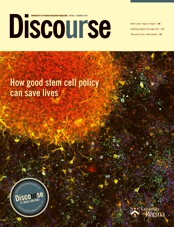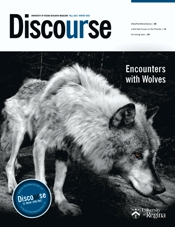All photos by Dianne Ouellette

Growing up on a Saskatchewan farm, I was always surrounded by an overwhelming presence of nature. The barn swallows swooped down as my little brother and I played in the barn and the mice scattered and the cats pounced as we jumped on hay bales. We spent afternoons capturing and releasing frogs.
Decades later, these connections to animals and the land are still central to my life.
Through my master’s research project, aen loo pawatamihk: Inherited and Personal Memories Shared Through Storytelling and Mediated Interactions with More-Than-Human Beings, I am using photography and video to capture my encounters with animals and the land, and through this work I remember my family and ancestors and share our untold histories and trauma.
When I started my research, I had no intention of revealing hidden family secrets. I was in the throes of finishing a documentary that told the story of my brother falling to his death in a service rig accident. As I was grieving and working on my family's traumatic story, I realized it was also time to reveal more challenging truths.
This took me back to a major turning point in my life.
More than 25 years ago, my brother revealed to me that our biological grandmother, whom we never knew, was Cree. He had learned this on a trip to visit our father, who did not raise us.
When I asked my grandfather about her, he told me a tale of her running off on an adventure to pursue her dreams in Hollywood. Through family, I learned that she had left him early in their marriage and that later in life she was brutally murdered. I was shocked when I discovered this traumatic family history, and I began to explore my Indigenous identity – a journey that has influenced my filmmaking practice for the last two decades.

In 2017, I began writing a series of short stories based on personal encounters with wolves and bison. During this time, on multiple trips in Western Canada, I took thousands of photos and hours of video footage. Through this process I’ve come to understand that I have a spiritual connection with wolves and bison, and now my master’s research centres on these photos.
Initially shot in colour, I cover each photo with a duplicate layer that I convert to black and white. This layer represents a blanket – a powerful symbol in Indigenous storytelling and ceremony. I then erase selected sections of the photo, and bring the true colour back to the surface, revealing the original colour, which signifies the exposing of truths, and also represents colours in the Métis sash.
My research has allowed me to watch bison graze in the distance and roll in the dirt, and to walk next to an old great grey wolf as I listened, in awe, to his pack howl in unison.
With my camera in hand, I have crouched in the dirt and grass. I have perched on rocks, and have climbed to the edges of cliffs and outcropped trees to document these moments. Whether an animal wandered close to me, or was off on the horizon, whether a flower blew in the wind or a rock crowned from the ground, I acknowledge them as having spirit.

The act of capturing moments with these more-than-human beings has become my path to holistic well-being, as the deeply embedded trauma and inherited colonial wounds slowly begin to scar over. I gain knowledge of more-than-human spiritual connections by remembering, honouring, and giving voice to ancestors through my lens.
As I come to terms with my grandmother's murder, and losing my brother and others, I continue to search for deeper spiritual connections to more-than-human beings. I honour their memory by sharing narratives through video and photographic interactions with more-than-human beings, for my stories began long before I was born and will continue long after I am gone.













